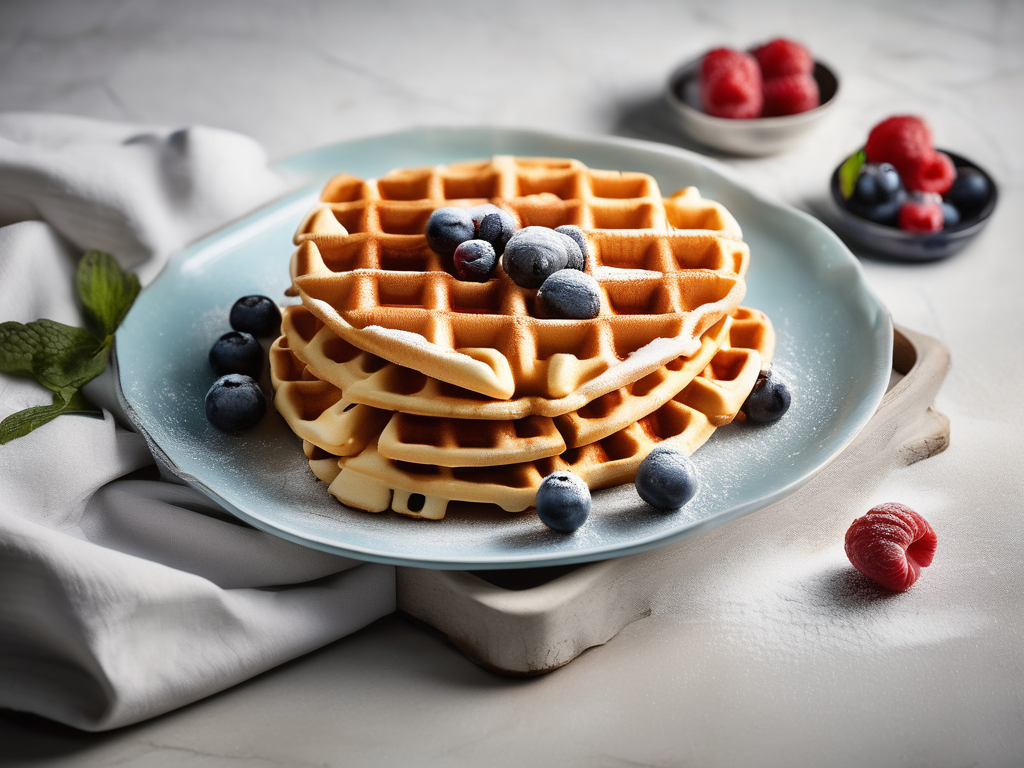
Thawing Frozen Waffles: Tips for Optimal Taste and Texture
Get Your Free Food Safety Cheat Sheet
30 most common foods with instant answers. Print it and stick it on your fridge—completely free!
Thawing Frozen Waffles: Tips for Optimal Taste and Texture
Frozen waffles are a convenient breakfast option that can be quickly heated up for a delicious meal. However, thawing frozen waffles properly is key to ensuring they maintain their taste and texture. In this blog post, we will explore the best ways to thaw frozen waffles for optimal results. (Frozen waffles)
Why Thawing Frozen Waffles Correctly Matters
Thawing frozen waffles correctly is essential for several reasons:
- Texture: Thawing waffles properly helps maintain their texture, preventing them from becoming soggy or rubbery.
- Taste: Proper thawing ensures that the waffles retain their flavor and don't become bland.
- Safety: Thawing waffles at the right temperature reduces the risk of bacterial growth, ensuring food safety.
Methods for Thawing Frozen Waffles
There are several methods you can use to thaw frozen waffles, depending on your time constraints and preferences:
1. Refrigerator Thawing
Thawing frozen waffles in the refrigerator is the recommended method for optimal results:
- Place the frozen waffles in the refrigerator the night before you plan to eat them.
- Allow the waffles to thaw slowly in the refrigerator for 8-12 hours.
- Once thawed, heat the waffles in a toaster or oven for a crispy texture.
2. Room Temperature Thawing
Thawing frozen waffles at room temperature is a quicker option but requires careful monitoring:
- Remove the waffles from the freezer and let them sit at room temperature for 1-2 hours.
- Check the waffles periodically to ensure they are thawing evenly.
- Heat the waffles in a toaster or oven after they have thawed.
3. Microwave Thawing
Microwaving frozen waffles is the fastest method but can result in uneven thawing and texture:
- Place the frozen waffles on a microwave-safe plate.
- Microwave the waffles on low power for 30-second intervals, flipping them over between intervals.
- Check the waffles frequently to prevent overheating.
4. Toaster Thawing
Thawing frozen waffles in a toaster is a quick and convenient method for those in a hurry:
- Place the frozen waffles directly into the toaster.
- Use the defrost setting to thaw the waffles slowly.
- Toast the waffles on a low setting once they are thawed.
Tips for Thawing Frozen Waffles Safely
To ensure food safety and optimal taste and texture when thawing frozen waffles, follow these tips:
- Always thaw frozen waffles in the refrigerator or using a controlled method to prevent bacterial growth.
- Do not refreeze thawed waffles to maintain quality and safety.
- Check the waffles for any signs of freezer burn or spoilage before consuming them.
- Follow the manufacturer's instructions for thawing and heating frozen waffles for the best results.
- Store leftover thawed waffles in an airtight container in the refrigerator and consume them within a few days.
Conclusion
Thawing frozen waffles properly is essential for maintaining their taste, texture, and safety. Whether you choose to thaw them in the refrigerator overnight or use a quicker method like room temperature or microwave thawing, following the recommended guidelines will ensure your waffles are delicious and safe to eat. Experiment with different thawing methods to find the one that works best for you and enjoy a perfect breakfast every time. Remember, proper thawing leads to a delightful waffle experience! [Frozen waffles](/food/frozen waffles) (Frozen waffles)
Authoritative Food Safety References
These agencies and university labs inform every tip and health precaution we publish.
USDA FoodKeeper – Cold Storage Guidelines
Official refrigerator, freezer, and pantry timelines maintained by the U.S. Department of Agriculture.
Visit USDA FoodKeeperFDA Produce Safety Rule & Grower Guidance
Field-to-fridge handling practices that prevent contamination of fruits, vegetables, and leafy greens.
Visit FDA Produce SafetyCDC Foodborne Illness Prevention Hub
Surveillance-backed guidance on pathogens, symptoms, and steps to reduce foodborne illness risk.
Visit CDC Food SafetyUC Davis Postharvest Technology Center
University research detailing optimal storage atmospheres for produce after harvest.
Visit UC Davis PostharvestPenn State Extension – Home Food Preservation & Safety
Peer-reviewed extension bulletins on safe canning, chilling, and reheating practices.
Visit Penn State ExtensionGet Your Free Food Safety Cheat Sheet
30 most common foods with instant answers. Print it and stick it on your fridge—completely free! Want more? Upgrade to the complete guide with 70+ foods.
Scan your food directly and get instant safety info using our AI-powered camera feature.